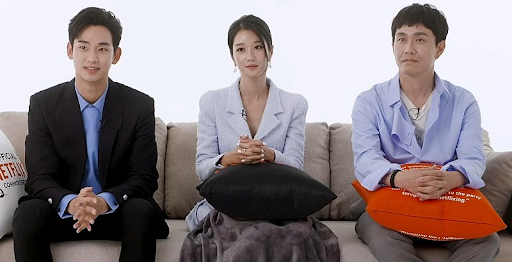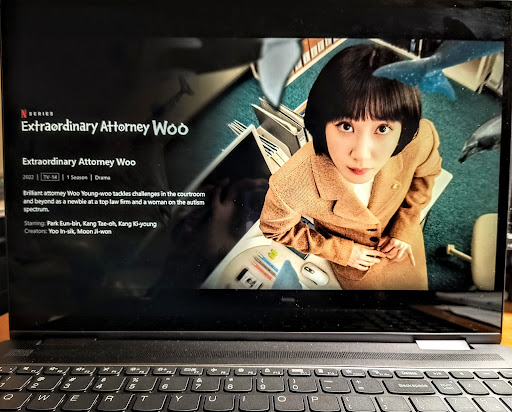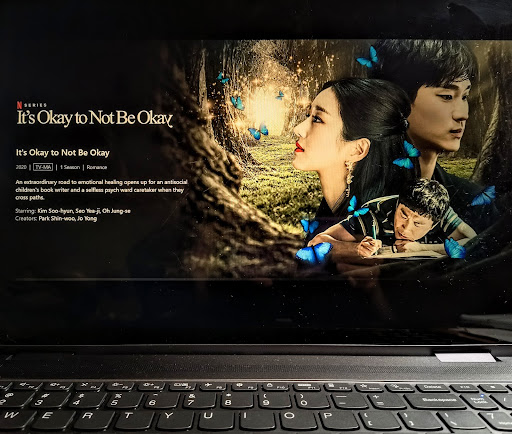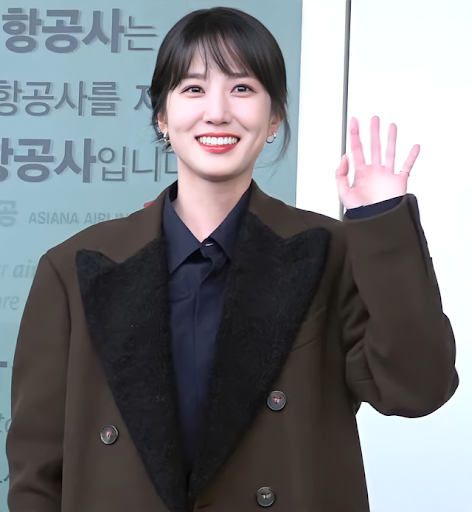
Over the summer, I was scrolling through Netflix, itching to quell my boredom. I came across several promising series, two of which were Korean dramas (commonly shortened to Kdramas). Coincidentally, both of them just so happened to have main characters that were on the autistic spectrum. Curious to see if this was just merely a fluke, I researched how autistic individuals been shown on screen in the past.
The History of Autistic Representation in Media
The words “autism” and “autistic” are frequently thrown around in both modern slang and everyday language. But what exactly is autism?
The National Institutes of Health defines “autism spectrum disorder (ASD) [as] a neurological and developmental disorder that affects how people interact with others, communicate, learn, and behave.” It is essential to realize that there is no standard metric for autism. Instead, there is a range in the severity of autism.
The term “autism” was coined in the early 1910s by Eugen Bleuler, a Swiss psychiatrist. Over the years, many researchers have attempted to put a label on autism by describing symptoms that they observed during the infancy period of autistic children.
These researchers tried to find the root cause of autism, with some suspecting injuries to the infant following birth and others blaming impassive mothers. While the cause of autism has not yet been discovered, scientists suspect that genetics play a prominent role.
It is uncertain when the first autistic character popped up in the media, but characters with autism began to make numerous appearances during the 1970s. However, in the 1970s, most forms of entertainment had aloof, distant, and sometimes mentally incapable autistic characters, showing only one dimension of autism. Others even used autistic characters as comedic relief, making autism or autistic characteristics a punchline for the audience to laugh at.
Recent Times
Extraordinary Attorney Woo, a Netflix series aired in 2022, stars Woo Youngwoo, an attorney on the autistic spectrum who uses her abilities to solve and win cases by thinking outside of the box. In the drama, Youngwoo is depicted as having an extraordinarily high IQ and photographic memory, proving to be helpful in many of her court hearings.

Woo has difficulty holding eye contact, dealing with touch, is sensitive to loud noises, and has a case of echolalia (the repetition of words said by another person). Notably, Youngwoo uses palindromes, like her name, as an introductory catchphrase and occasionally blurts out, “kayak, deed, rotator, noon, race car, Woo Young-woo.”
The director, Yoo In-shik, was careful to not glorify autism and put neurodivergence on a pedestal. This is a problem with many producers who have uncomplex ways of viewing autism; they either make people on the autistic spectrum appear either superhuman or subhuman. Rather, Yoo depicts differing aspects and potential drawbacks of Youngwoo’s seeming superpower, like her painfully realistic difficulty understanding emotions.
Youngwoo displays characteristics of savant syndrome (when people with developmental disorders develop incredible talent in a subject), which is associated with autism. She can recall minute details and solve cases that were previously at a standstill.
However, Extraordinary Attorney Woo is not the only show with a savant main character. Another example is the American medical drama series The Good Doctor, featuring Shaun Murphy, the autistic protagonist. Like Woo, Murphy is out of place in social settings but can process information faster than his colleagues and has an impeccable memory.
Unlike what popular media may suggest, savant syndrome is quite rare, only 0.5% to 10% of the autistic community has some form of savant syndrome. “I feel that shows nowadays might end up being too much on the ‘smart genius superpower’ side of autism and not so much on the side that just isn’t all that impressive…Showing both sides in a way that is both inoffensive to people with autism and in a way that allows the character to be appealing is extremely difficult, so kudos to the people who aren’t scared to try,” said Bronx Science Psych and Neuro Club member Alexandria Liu ’27.
With the media choosing to focus on the “genius” side of autism, they tend to under-represent those who do not have savant syndrome. If not, they are perpetuating the idea that many autistic people have incredible skills in their field of interest, which isn’t always the case.

(Arianna Hwang)
We see this in the Netflix show It’s Okay to Not Be Okay, which revolves around a male caretaker, Moon Gang-tae, and his autistic older brother, Moon Sang-tae. Sang-tae develops an intense fear of butterflies after witnessing his mother’s murder, causing the Moon brothers to constantly move in order to escape from the “butterflies.” Sang-tae stutters frequently, dislikes physical contact (especially on the head), and can not maintain eye contact.
In several interviews with kdramastars, Oh Jung Se, the neurotypical actor behind Moon Sang-tae, sheds light on his experiences playing the role of an autistic character and the copious amount of research he conducted in order to accurately bring his character to life. Oh took notes on the mannerisms of people on the autism spectrum in an effort to carefully and correctly play Moon Sang-tae.
Even after It’s Okay to Not Be Okay ended, Oh continued to connect with the autistic community. He honored a request from an autistic musician, Bae Bum Joon, who wanted to meet Sang-tae to protect him from what he experienced in the show. While Oh did not have to meet up with Bae, Oh went above and beyond by dressing up and acting as Sang-tae while taking Bae to a popular amusement park. This shows Oh’s respect towards people on the autistic spectrum and that Sang-tae was more than just a role he had portrayed in the past.
Unfortunately, not all actors or screenwriters do their research, and some end up stigmatizing the autistic community. This uptick in the representation of people in the autistic spectrum serves as a double-edged sword. While representation shows that autistic people do exist, the ways that some series display autistic people are demeaning and include horrifically wrong stereotypes.
An example is the science fiction television series The 4400, which includes a character named Brandon Powell. Powell is an autistic young boy who is given a promicin shot, which would have a 50-50 chance of killing him or giving him a superpower. His father, Ryan Powell, administered the shot in hopes that it would cure his son of autism and claimed that his son was dead to begin with since he couldn’t even play catch.
Ryan Powell’s lack of regard for his son’s well-being is already quite startling; however the sci-fi series does not stop there. After receiving the shot, Brandon Powell receives the power to induce fear in those around him whenever he is overwhelmed or upset. While it is true that some people on the autistic spectrum have meltdowns, Brandon was illustrated as dangerous, unstable and an overall threat. The sci-fi series takes it one step further and a character with a healing ability “cures” Brandon of his autism.
Brandon being autistic did not add any value to The 4400, and this detail could have been removed. It would have been acceptable if a non-autistic kid had received the promicin shot and was wreaking havoc; after all, Brandon was an unwilling participant and too young to comprehend the severity of his situation. Not to mention, the shock value of a father risking his son’s life for no apparent reason would have remained even if Brandon was not autistic. Even the scene where the healer “cures” Brandon of his autism perpetuates a dangerous stereotype that autism is both curable and unwanted.
That being said, having autism represented on screen is great for bolstering the representation of an otherwise commonly overlooked community. But, the way in which autistic people are depicted can have an incredible influence on public perception, leading to accurate representation being more crucial than ever.
Who should be able to play autistic characters on screen?
This question has been a cause for debate. Some like Eliott Edeki ’24, “think it’s okay for minor roles as long as the actor is able to portray it in a way that doesn’t offend anyone.” But for leading roles, he said, “I think an actor on the spectrum should be required.”

There are numerous actors on the autism spectrum available to play the role of an autistic character, but it seems that most films and media cast neurotypical actors instead. While this is a missed opportunity to give chances to autistic artists, as long as the actors are actively, accurately, and respectfully showcasing their characters, having autistic characters in shows or films may be a win for the autistic community.
Moreover, with more appearances of autism in the film industry, those who are neurodivergent may feel a sense of belonging. The issue of accurate portrayals is significant: autism doesn’t only affect children, and autistic individuals do not “grow out of autism.” The media has a special ability to eliminate misconceptions and broaden perspectives through representation that encompasses a wider scope of autism. This immense power, if used for good, could bridge gaps in the employment of neurodivergents.
It is important to remember that this seeming rise in autism representation should not be a fad. Rather, autistic voices should continuously be given an outlet that extends beyond the screen and allows them to lead more independent lives.
To watch Extraordinary Attorney Woo on Netflix (subscription required), click HERE.
To watch It’s Okay to Not Be Okay on Netflix (subscription required), click HERE.
“I feel that shows nowadays might end up being too much on the ‘smart genius superpower’ side of autism and not so much on the side that just isn’t all that impressive,” said Bronx Science Psych and Neuro Club member Alexandria Liu ’27. “Showing both sides in a way that is both inoffensive to people with autism and in a way that allows the character to be appealing is extremely difficult, so kudos to the people who aren’t scared to try.”
